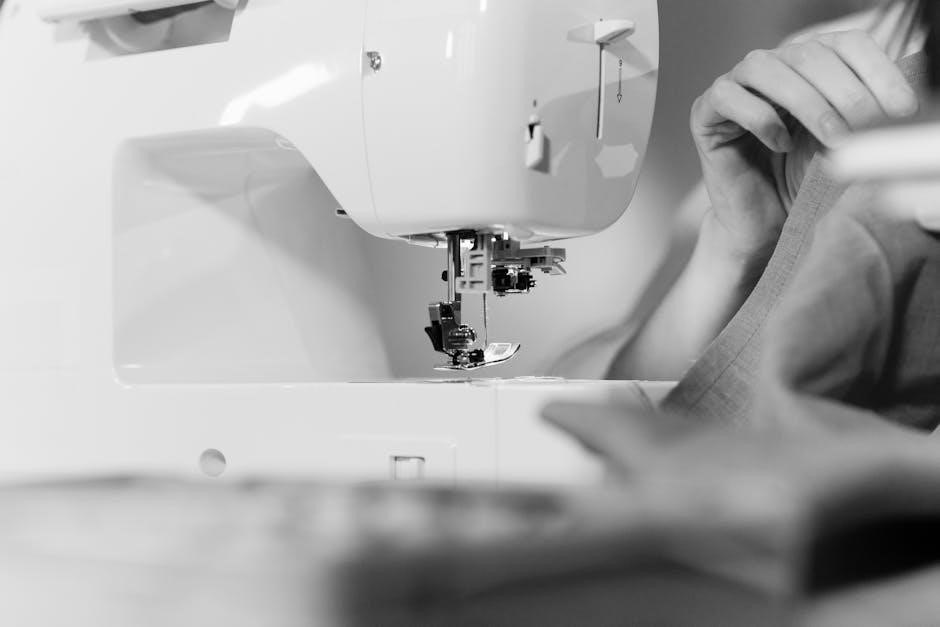the crucible act 3 reading guide
Act 3 of The Crucible unfolds in the Salem courtroom, where tension escalates as John Proctor confronts the court. This act is pivotal, showcasing desperation, moral dilemmas, and the community’s fear-driven hysteria. Giles Corey’s dramatic entrance and Mary Warren’s testimony add complexity, while Proctor’s struggle for justice highlights themes of integrity and sacrifice. The courtroom becomes a symbol of oppression, setting the stage for tragic consequences.
1.1. Setting of Act 3
Act 3 of The Crucible is set in the Salem courtroom on August 5, 1692. The courtroom is a tense, oppressive space dominated by the authority of Deputy Governor Danforth and Judge Hathorne. The room is filled with villagers, creating an atmosphere of fear and anticipation. Mary Warren, escorted by John Proctor, enters nervously, while Giles Corey later makes a dramatic entrance, defying the court. The setting emphasizes the legal and moral conflict, with the courtroom serving as both a physical and symbolic space of judgment and power. The date and location highlight the historical context of the Salem witch trials, grounding the act in a specific time and place of hysteria and accusation.
1.2. Summary of Key Events in Act 3
Act 3 of The Crucible opens in the Salem courtroom, where John Proctor brings Mary Warren to testify against Abigail. Giles Corey enters, defying the court, and is eventually pressed to death for refusing to name names. Mary Warren, under pressure, retracts her earlier confession, accusing Proctor of witchcraft. Proctor, desperate to save his life, confesses to adultery but refuses to sign a written confession, tearing it up. The court, unconvinced by his words, sentences him to death. These events highlight the courtroom’s oppressive atmosphere and the escalating hysteria, as justice falters and fear prevails. The act ends with Proctor’s defiant refusal to betray his integrity, even in the face of death.

Character Analysis in Act 3
Act 3 delves into the complexities of key characters, revealing their moral struggles and motivations. John Proctor’s integrity shines as he confronts the court, while Danforth’s rigid authority intensifies the tension. Mary Warren’s testimony highlights her vulnerability, and Giles Corey’s defiance underscores his courage. Abigail’s manipulation reaches its peak, showcasing her cunning. Each character’s actions in this act define their roles in the play’s tragic unfolding, emphasizing themes of justice, morality, and sacrifice. Their interactions drive the plot’s emotional depth, making Act 3 a pivotal moment in the story’s progression. The characters’ decisions here have lasting consequences, shaping the play’s outcome.
2.1. John Proctor’s Role in Act 3
John Proctor emerges as a central figure in Act 3, displaying moral courage and integrity. He confronts the court, challenging its authority and revealing the hypocrisy of the witch trials. Proctor’s refusal to falsely confess, despite the pressure, highlights his commitment to truth and justice. His internal struggle with guilt over his past affair with Abigail is evident, but he ultimately chooses to stand by his principles. By tearing up the confession document, Proctor symbolically resists the court’s oppression, showcasing his defiance and willingness to sacrifice himself for the truth. His actions not only define his character but also inspire others to question the court’s legitimacy, making him a key figure in the act’s dramatic tension and moral conflict. His leadership and sacrifice deeply impact the play’s progression.
2.2. Danforth’s Authority and Decision-Making
Deputy Governor Danforth wields significant authority in Act 3, firmly believing in the court’s divine mission to root out witchcraft. His rigid adherence to the law and refusal to question the court’s legitimacy underscore his unwavering commitment to order and religious principles. Danforth’s decision-making is marked by a lack of flexibility, as he dismisses evidence that contradicts the accusations, viewing such challenges as threats to the court’s authority. His exchanges with Proctor reveal a deep tension, as Danforth sees Proctor’s defiance as an attack on the legal process. Danforth’s actions highlight the dangers of unchecked power and the erosion of justice in a climate of fear and hysteria.
2.3. Mary Warren’s Testimony and Its Impact
Mary Warren’s testimony in Act 3 is a pivotal moment, as she reluctantly accuses John Proctor of witchcraft under intense pressure from the court. Her testimony, though unsteady and filled with contradictions, carries significant weight due to her role as a former servant in Proctor’s household. Mary’s fear of Abigail and the court’s intimidating atmosphere forces her to lie, further entangling Proctor in the witchcraft allegations. Her words, despite their lack of credibility, are used to justify Proctor’s condemnation, illustrating the court’s reliance on unreliable testimonies. Mary’s testimony highlights the destructive power of fear and the manipulation of vulnerable individuals in the chaotic Salem community.
2.4. Giles Corey’s Courage and Sacrifice
Giles Corey’s courage and sacrifice in Act 3 underscore his unwavering integrity and defiance against the corrupt court. Despite being an elderly man, Corey refuses to plead guilty to witchcraft, knowing it would falsely incriminate others. His famous last words, “More weight!” symbolize his resilience as he is pressed to death for his refusal to cooperate. Corey’s sacrifice highlights the brutality of the Salem witch trials and the lengths to which individuals would go to maintain their dignity. His death serves as a powerful critique of the court’s injustice, showcasing his moral strength in the face of overwhelming oppression and fear.
2.5. Abigail Williams’ Manipulation in Act 3
Abigail Williams’ manipulation in Act 3 reaches its peak as she continues to exploit the court’s fear and hysteria. Using her charm and false piety, she orchestrates the proceedings, ensuring her enemies are targeted. Her ability to control the other girls, making them mimic her accusations, solidifies her power. Abigail’s manipulation escalates when she falsely accuses John Proctor, leveraging her influence to turn the court against him. Even when faced with Proctor’s truths, her cunning ensures the court remains deceived. Her actions highlight her ruthlessness and the dangerous power of unchecked deception, driving the play’s tragic momentum and showcasing her mastery of manipulation.
2.6. The Role of William Hathorne in the Court
William Hathorne plays a significant role in Act 3 as a deputy governor and a judge in the Salem court. He is a strict adherent to the law and believes in the court’s authority, often displaying little empathy for the accused. Hathorne’s questioning is sharp and probing, reflecting his commitment to the legal process, though his rigid mindset makes him resistant to new evidence. His skepticism toward John Proctor’s defense and his dismissal of Giles Corey’s evidence highlight his unwavering belief in the court’s decisions. Hathorne’s actions underscore the dangerous blending of legal procedure with moral inflexibility, contributing to the play’s tragic unfolding.

Themes in Act 3
Themes in Act 3 include justice vs. injustice, integrity, guilt, hysteria, and reputation, highlighting the moral and societal tensions driving the Salem witch trials’ chaos.
3.1; Justice and Injustice in the Courtroom
In Act 3 of The Crucible, the courtroom becomes a stark example of injustice, as fear and hysteria dictate the proceedings. The trials are conducted with little regard for due process, and accusations based on “spectral evidence” are accepted as fact. Deputy Governor Danforth, representing the court’s authority, refuses to consider rational explanations, instead upholding the skewed logic of the witch hunt. John Proctor’s defiance highlights the moral corruption of the system, while the court’s refusal to acknowledge Rebecca Nurse’s good reputation underscores the chaos of the trials. This act exposes the dangers of a justice system fueled by fear and manipulated by false testimony, ultimately revealing the darkest aspects of human nature under oppressive authority.
3.2. Integrity and Morality in Proctor’s Actions
John Proctor’s actions in Act 3 exemplify his unwavering integrity and moral courage. Despite the overwhelming pressure from the court, Proctor refuses to falsely confess to witchcraft, even when faced with the certainty of death. His decision to stand by the truth, despite his past mistakes, highlights his commitment to his personal morality. Proctor’s willingness to sacrifice his life rather than betray his principles underscores his redemption arc, as he seeks to reclaim his integrity after his affair with Abigail. His defiance in the courtroom, particularly when he tears up the false confession, symbolizes his rejection of the corrupt system and his steadfast belief in justice and honesty.
3.3. Guilt and Redemption: Proctor’s Internal Struggle
Proctor’s internal struggle in Act 3 is deeply rooted in his guilt over his past affair with Abigail and his desire for redemption. His initial reluctance to expose the truth reflects his shame and fear of judgment. However, as the act progresses, Proctor confronts his flaws and seeks redemption by standing up for justice, even at great personal cost. His refusal to falsely confess, despite the threat of death, demonstrates his moral growth and commitment to clearing his name and protecting others. This struggle highlights Proctor’s transformation from a man burdened by guilt to one who finds redemption through his courage and sacrifice.
3.4. Hysteria and Fear in the Community
In Act 3, the community is consumed by hysteria and fear, driven by the relentless witch trials. The court’s acceptance of unsubstantiated accusations fuels the panic, as fear of being accused spreads rapidly. The girls’ false testimonies, supported by the court’s zeal, create an atmosphere of dread and mistrust; Neighbors turn against one another, and the fear of death intensifies the chaos. The court’s failure to seek evidence escalates the madness, making it nearly impossible for reason to prevail. This collective hysteria paralyzes the community, allowing fear to dominate and leading to devastating consequences for many innocent lives.
3.5. Reputation and Its Significance in Salem
In Act 3, reputation emerges as a central theme in Salem, where societal standing is deeply intertwined with moral integrity. John Proctor’s fear of tarnishing his name drives his initial reluctance to expose Abigail’s deceit, highlighting the power of reputation in shaping decisions. The community’s obsession with maintaining a virtuous image fuels the witch hunt, as accusations are often motivated by the desire to protect or enhance one’s social standing. The court’s willingness to accept unverified claims further underscores the fragility of reputation in a society governed by fear and suspicion. Reputation becomes both a weapon and a vulnerability, influencing the tragic unfolding of events.

Key Scenes in Act 3
Act 3 of The Crucible features pivotal moments that escalate tension and reveal character depths. Proctor confronts the court, Giles defies authority, and Mary’s testimony seals Proctor’s fate.
4.1. Proctor’s Confrontation with the Court
In Act 3, John Proctor confronts the court to save his wife, Elizabeth, by exposing Abigail’s deceit. Driven by his integrity, Proctor reveals his past affair with Abigail, hoping to discredit her. However, the court, led by Deputy Governor Danforth, views Proctor’s actions as a challenge to their authority. Mary Warren, initially supportive, falters under pressure, undermining Proctor’s case. Proctor’s frustration grows as the court dismisses his evidence, ultimately leading to his accusation of witchcraft. This confrontation highlights Proctor’s moral courage and the court’s rigid refusal to acknowledge the truth, underscoring themes of justice and integrity.
4.2. Giles Corey’s Entrance and His Defiance
Giles Corey’s entrance in Act 3 marks a turning point as he defies the court’s authority. Brought in after being pressed for names, Giles refuses to cooperate, stating, “I will not give you names!” His defiance shocks the court, as he challenges Danforth’s power. Giles’s stubbornness and integrity highlight the corruption of the legal system. Despite the risk of severe punishment, Giles stands firm, refusing to betray others. His actions embody resistance against the oppressive regime, showcasing his courage and refusal to compromise his principles. This moment underscores the themes of integrity and the dangers of unchecked authority, making Giles a symbol of moral strength in the face of tyranny.

4.3. Mary Warren’s Testimony Against Proctor
Mary Warren’s testimony against John Proctor in Act 3 is a pivotal moment, as she falsely accuses him of witchcraft. Under pressure from the court and Abigail’s manipulation, Mary claims Proctor conspired with the devil. Her testimony, though false, carries significant weight due to the court’s eagerness to believe such accusations. Mary’s actions reveal her internal conflict between truth and fear, as she succumbs to the hysteria surrounding her. Proctor’s reputation is further tarnished, and the court’s bias against him becomes more pronounced. This scene highlights the destructive power of false accusations and the manipulation of vulnerable individuals in the Salem witch trials.
4.4. Proctor’s Confession and Its Aftermath
In a desperate attempt to save his life, John Proctor falsely confesses to witchcraft, hoping to spare himself and his family. However, his confession is deemed insufficient by the court, as they demand he name others involved in witchcraft. Proctor refuses to incriminate anyone else, showcasing his moral integrity. Elizabeth, called to verify his confession, lies to protect him, stating he is a good man. The court, however, dismisses her testimony due to her husband’s admission of adultery. Proctor, realizing the futility of his confession, tears it up, choosing to die with his dignity intact rather than betray others. This moment underscores his tragic-heroic resolve and the court’s relentless pursuit of convictions.

4.5. The Climactic Ending of Act 3
The act concludes with heightened tension as Proctor, after tearing up his confession, is led away to his execution. Giles Corey, having been pressed to death for refusing to name others, dies offstage, symbolizing his defiance against the court. The courtroom erupts in chaos, reflecting the moral and emotional turmoil of the characters. Proctor’s decision to die with integrity, rather than betray others, underscores his moral strength. Meanwhile, the court’s relentless pursuit of convictions highlights the unchecked power of the witch trials. The ending sets the stage for the tragic events of Act 4, leaving the audience with a sense of impending doom and moral despair.

Symbolism and Motifs in Act 3
Act 3 is rich in symbolism, with the courtroom representing oppression, the confession document symbolizing forced lies, and light-dark contrasts signifying moral struggle and deception.
5.1. The Courtroom as a Symbol of Oppression
The courtroom in Act 3 serves as a powerful symbol of oppression, embodying the oppressive regime of the Salem witch trials. The rigid, formal setting reflects the strict societal control exerted by the court, while the judges’ bench looms as a symbol of unchecked authority. The physical layout, with the accused standing alone before the court, underscores their vulnerability and the overwhelming power of the judiciary. This oppressive atmosphere mirrors the broader societal fears and hysteria driving the trials. The courtroom becomes a space where justice is distorted, highlighting the dangers of unchecked power and false accusations. Its rigid structure reinforces the theme of a community gripped by fear and control.
5.2. The Significance of the Confession Document
The confession document in Act 3 holds profound significance as a tool of manipulation and control. It represents the court’s relentless pursuit of guilt, forcing individuals to falsely admit to witchcraft. The document symbolizes the destruction of personal integrity, as signing it means surrendering one’s truth. Proctor’s refusal to sign, despite the promise of life, highlights his commitment to honesty and moral integrity. The document also embodies the court’s hypocrisy, as it prioritizes public confession over actual justice. Its presence underscores the play’s themes of fear, manipulation, and the devastating consequences of false accusations, ultimately revealing the deeply flawed nature of the Salem justice system.
5.3. Light and Darkness as Metaphors for Good and Evil
In Act 3 of The Crucible, light and darkness serve as powerful metaphors for good and evil. The courtroom, often associated with truth and justice, is instead shrouded in moral darkness, reflecting the hysteria and fear that dominate Salem. Light, symbolizing honesty and purity, is embodied by John Proctor, who refuses to compromise his integrity even in the face of death. Conversely, darkness represents the evil of false accusations and the manipulation of the court. The contrast between light and darkness highlights the moral struggle, with Proctor’s steadfast truth standing against the oppressive shadow of the court’s corruption. This duality underscores the play’s exploration of moral decay and the fight for righteousness.

Study Guide for Act 3
This section provides a comprehensive analysis of Act 3, offering insights into key quotes, study questions, and critical moments to deepen understanding of the play’s themes and characters.
6.1. Important Quotes to Analyze
“You must understand, sir, that a person is either with this court or he must be counted against it.” ⸺ This quote by Danforth highlights the rigid, unforgiving nature of the court’s authority and its refusal to tolerate dissent.
“I do think I see some shadow of truth in you.” ⎼ Proctor’s statement underscores his internal struggle and quest for moral clarity amid chaos.
“I never saw any witches.” ⸺ Mary Warren’s testimony reveals her initial honesty but also her eventual manipulation by Abigail.
“It is mistaken law that leads you to this.” ⎼ Giles Corey’s defiance challenges the court’s flawed legal practices and showcases his courage.
“I can. And there’s your proof!” ⎼ Proctor’s refusal to confess, even in the face of death, symbolizes his redemption and commitment to truth.
These quotes encapsulate the play’s themes of justice, hysteria, and morality, offering deeper insights into the characters’ motivations and the societal tensions of Salem.
6.2. Study Questions for Critical Thinking
How does the court’s reliance on “spectral evidence” undermine the concept of fair justice in Act 3?
What motivates characters like Mary Warren and Abigail to lie under oath, and what does this reveal about their moral fiber?
Analyze Proctor’s decision to tear up his confession. What does this act symbolize about his character and the themes of integrity?
How does Danforth’s refusal to consider new evidence reflect the dangers of unchecked authority?
What role does fear play in shaping the actions of the community and the court in Act 3?
Evaluate Giles Corey’s sacrifice. What message does his death convey about courage and resistance?
How does Act 3 highlight the tension between personal reputation and moral truth in Salem?
These questions encourage a deeper exploration of the play’s themes, character dynamics, and historical context.
6.3. Analysis of Key Moments and Their Implications
Key moments in Act 3 reveal the escalating tension and moral decay in Salem. Proctor’s confrontation with the court highlights his integrity but also the court’s unwillingness to admit error. Mary Warren’s testimony against Proctor showcases her vulnerability and the court’s reliance on unreliable evidence. Giles Corey’s refusal to name others demonstrates his courage and the oppressive nature of the trials. Proctor’s decision to tear up his confession symbolizes his commitment to truth, even at the cost of his life. These moments underscore themes of justice, integrity, and the dangers of unchecked power, foreshadowing the play’s tragic conclusion.

Historical Context of Act 3
Act 3 reflects the hysteria of the Salem Witch Trials, mirroring the McCarthyism era’s fear-driven persecution. Miller draws parallels between historical witch hunts and modern witch hunts.
7.1. The Salem Witch Trials and Their Impact
The Salem Witch Trials (1692–1693) were a series of prosecutions in colonial Massachusetts, fueled by mass hysteria and fear of witchcraft. Act 3 mirrors this historical event, capturing the paranoia and irrationality of the trials. The trials led to the execution of 20 people, mostly women, and the imprisonment of many others. The community’s fear of the unknown and its rigid religious beliefs created an environment where accusations spiraled out of control. The trials ultimately exposed the dangers of unchecked power and false testimonies. Miller uses this historical context to critique the destruction caused by fear, superstition, and the breakdown of rational justice.
7.2. McCarthyism and Its Parallel to the Play
Arthur Miller wrote The Crucible during the McCarthy era, drawing parallels between the Salem Witch Trials and the Red Scare. McCarthyism, like the witch trials, was characterized by mass hysteria, fear of the unknown, and the unchecked power of authoritarian figures. Both periods saw innocent people accused and ruined due to false testimonies and fear-driven paranoia. The play critiques the destructive nature of such witch-hunts, highlighting how fear can dismantle rationality and justice. Miller uses historical events to warn against the dangers of unchecked power and the erosion of civil liberties, making The Crucible a timeless commentary on human behavior during times of fear and repression.

Dramatic Devices in Act 3
Miller uses tension, irony, and suspense to heighten drama in Act 3, emphasizing the courtroom’s oppressive atmosphere and the characters’ emotional turmoil.
8.1. Irony in the Courtroom Scenes
In Act 3, Arthur Miller employs irony to highlight the moral corruption and hypocrisy of the Salem witch trials. Verbal irony is evident when Danforth claims the court seeks justice, yet ignores credible evidence. Situational irony occurs as Proctor, an honest man, is condemned for adultery, while Abigail, the true culprit, escapes punishment. The courtroom, meant to uphold truth, becomes atool of deception. This contrast between appearance and reality underscores the play’s critique of authoritarianism and mass hysteria, emphasizing the destructive power of fear and false accusations.
8.2. Tension and Suspense in the Narrative
Act 3 of The Crucible is filled with tension and suspense, driven by the escalating conflict in the courtroom. Proctor’s emotional confrontation with the court creates a palpable sense of urgency, as his fate hangs in the balance. The crowd’s divided reactions heighten the drama, while Mary Warren’s wavering testimony builds uncertainty. Miller’s use of dialogue and pacing intensifies the suspense, particularly as Proctor’s honesty clashes with the court’s rigid authority. The tension peaks when Proctor tears up his confession, defying Danforth and sealing his fate. This dramatic buildup keeps readers engaged, emphasizing the moral stakes and the tragic inevitability of the events unfolding.
8.3. Foreshadowing of the Play’s Tragic End
Act 3 of The Crucible is rich with foreshadowing that hints at the tragic conclusion of the play. Proctor’s refusal to falsely confess and his ultimate tearing of the confession document signify his impending doom. The court’s relentless pursuit of justice, despite the lack of evidence, foreshadows the inevitability of the executions. Mary Warren’s fear and instability suggest the chaos that will escalate, while Giles Corey’s silent defiance hints at the broader resistance that will be crushed. The repetition of the phrase “God is dead” underscores the moral decay and impending catastrophe, leaving little doubt that the play will end in tragedy for Proctor and the community.
Act 3 of The Crucible masterfully intertwines themes of justice, hysteria, and sacrifice, setting the stage for the play’s devastating conclusion. Proctor’s integrity and the court’s relentless pursuit of power highlight the inevitable tragedy, leaving a profound reflection on morality and societal failure.
9.1. Summary of Themes in Act 3
Act 3 of The Crucible delves into themes of justice and injustice, integrity, guilt, and hysteria. The courtroom serves as a stark reminder of the oppressive regime, where fear and manipulation override truth. Proctor’s struggle with guilt and redemption highlights his moral integrity, while the community’s hysteria escalates, fueled by false accusations. Reputation emerges as a fragile yet powerful force, influencing decisions and lives. The act underscores the devastating consequences of unchecked power and the loss of moral compass, leaving a haunting reflection on human frailty and societal failure.
9.2. The Impact of Act 3 on the Overall Play
Act 3 serves as the emotional and dramatic peak of The Crucible, intensifying the play’s themes of hysteria, injustice, and moral integrity. Proctor’s confession and his ultimate refusal to sign the document underscore his internal struggle and redefine his character’s legacy. The courtroom’s rigid refusal to acknowledge truth highlights the dangerous escalation of fear and power. This act sets the stage for the play’s tragic conclusion, deepening the audience’s emotional investment. By accelerating the plot’s momentum, Act 3 ensures the play’s themes of integrity, sacrifice, and the consequences of unchecked power resonate powerfully, leaving a lasting impact on the narrative’s resolution.










